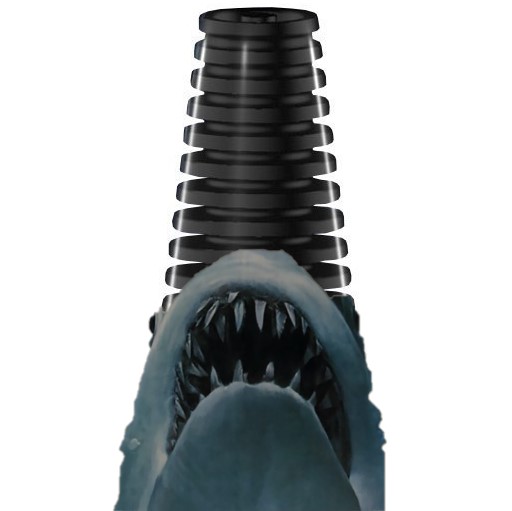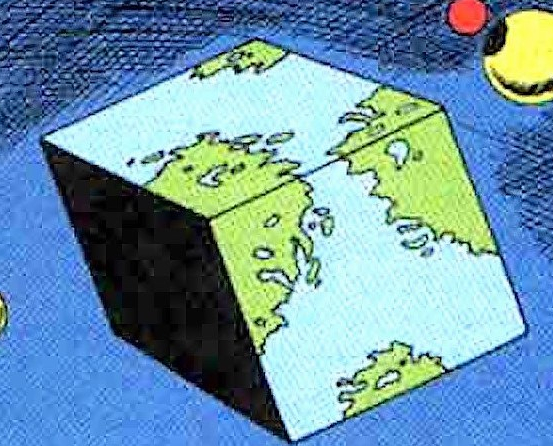- cross-posted to:
- futurology@futurology.today
- cross-posted to:
- futurology@futurology.today
Title reads like at ad, but this is a new way to reach energy independence. I actually have a small EcoFlow device and it’s pretty good for the price.
I hope this tech can be made available in the US soon.
Plug-in systems are built around a microinverter that feeds solar energy back into the home via a standard wall jack.
What the actual fuck?
The PowerStream has three proprietary ports: one that connects to your MC4 solar panels
Disqualified.
First part is classic stuff right?
Yeah. My grandfather (former electrician and electrical inspector) had a specific outlet he’d plug a gas generator in to back feed power into the house. This was in the 80s and 90s.
He also pointed out that he turned the main off so it did not back feed into the grid and power lines that a lineman is expecting to not be live.
If you’re gonna do dumb shit, do it smart
Thanks for the info, very interesting!
I wonder if just plugging a power source in a socket would work in a more modern setting?
Had all electricity redone last year, there was some crazy stuff from the fifties, a hot line going everywhere, just plug into it and ground it, power everywhere 😵💫. Guess I could have plugged some power in anywhere (cutting off the mains).
Now there are differential and fuses for every applience etc.
If you want to power your house independently from the grid, your house has to be independent from the grid.
Anything where you sell your excess power back to the grid is in tight cooperation with the grid operators.Standard house wiring is not set up to accommodate back feeding the grid nor independently powering.
So you will need a changeover switch professionally fitted if you want an independent power source, or your solar panel installers will fit the appropriate equipment to back-feed the grid.
Anything else will likely involve deaths, fires, broken equipment, criminal prosecution, insurance invalidation and all that nasty stuff.
Yeah my parents house had an rv/generator hookup and it had a huge bar across both the breakers so power could only flow in one direction. If you hooked up a generator it would cut the house off from the mains.
Your grandfather’s extra outlet for the alternate feed was the other half of a switch that flipped over when the mains power died. It shuts off the power connection to the house by flipping over and ensures no power goes back over the line, among other things. We have these - albeit the size of a washing machine - in really big datacenters.
From the article:
And when there’s a power outage, the PowerStream will turn off automatically to ensure there’s no electricity in the wires in order to protect line workers from shock. The PowerStream will only turn back on when the grid power returns.
Transfer switch is the proper tool for this and is a fairly simple install.
Should not be via a standard wall jack. As far as I know.
If it has anti islanding at least it’s unlikely to be a shock hazard.
That said are there any other concerns I’m missing?
Eh, that’s pretty standard where I live. Didn’t even know there were non standard wall jacks lol
Disqualified.
Why?
Because proprietary.
You realise it’s new tech and probably needs a proprietary connection?
Did you disqualify ebikes too when they appeared?
LOL, no, pretty much nothing ever “needs” a proprietary connection these days. Certainly not a fucking plain old power connection for a solar panel!
It’s not just for the panel though, it’s for switching between feeding an outlet and supplying an appliance, looks pretty intelligent to me
But I live in the EU, if they make it proprietary for no reason, they’ll get told to fuck off rather quickly 😂
There are a TON of standardized power connectors available that enable compatibility with off-the-shelf parts. Seriously, just look on Mouser or DigiKey. The only reason for proprietary connectors in this case is to try to obtain vendor lock-in.

That happens quite a bit in a lot of areas. It sounds stupid but your toaster does not care where the electricity it is using comes from.
As long as the sine waves are in sync with each other then you have nothing to worry about.
It’s probably not standard in America because the technology is newer and the regulations haven’t caught up.
2 problems….
-
If you forget to turn off the mains, it could really make a lineman unhappy.
-
Most of these setups require a reprimand dangerous “ suicide cord”
I know enphase micro inverters have “anti-islamding” tech that disables output when they lose grid connection. I would expect any reputable manufacturer to also have the same tech.
I don’t expect that for backup generators, but the proper way for them is via a transfer switch. You can wire in a properly made cable instead of a suicide cable. The transfer switch would prevent the inlet connector to the house from ever being live. (And since it is a proper cord from the generator, there would be no exposed ends coming from it.)
I agree on all points, but honestly I’d be pretty upset if I got a solar setup that didn’t work when the power was out haha
There is still a solution for that, solar + battery. I would love to have one myself, but solar alone can be a bit expensive on its own.
A battery is ~$8300 - 10k. It’s amazing how many places will try to charge $16k.
48v 100ah battery with Bluetooth BMS built in is around 700$ on ali express… Slightly more direct from Amazon in the USA if you want it fast. Will store close to 5kwh which I guarantee you beats out this solution. Of course you’d still need to buy the grid sync inverter (available in many places) as well as a solar mppt charger and solar cells. Still will come below this cost - or you’ll simply blow by the capacity of what you would have paid for this solution. But gotta have the old noggin on straight to do it yourself.
Sure, but this solution isn’t that.
Yes it is if you read the article, that’s exactly how he had it set up, and then you just have to manually move the battery where power is needed. You just can’t use your wall outlets when there’s an outage.
The first problem is solved by line sensing technology. If there is not power coming in and off of the switch then the inverter will not pump energy back into the system, at least on the ones that are not $12 cheap Chinese junk off of taobao.
And rather than suicide cords they generally have an IEC connector (standard rhombusy shaped computer power connector) on one end and a normal prong on the other.
But you are right that it is dangerous and not recommended to anyone, especially the people that are not smart enough to take the appropriate concerns and considerations into mind before using it.
I’d be super disappointed by owning a solar cell and not being able to use it during a power outage.
That’s a pretty standard issue with grid tied solar systems. You save a lot of money by not having batteries, but when the neighborhood goes down you go down with it.
Plus you don’t want to be pumping electricity into a downed power system, you could actually end up hurting a line man who is working on the system.
However, and both of these issues can be resolved by adding in a generator and a whole house cut off system.
In a power outage scenario, all you would have to do is throw the crossover switch and crank the generator. The generator would produce enough energy to reactivate the solar system.
You’re also likely to repeatedly trip whatever breaker that outlet is connected to unless it’s a big one like you’d have for a central AC unit, but then you’d likely also know enough to have a proper transfer switch.
Yes, but not at 800W
-
Proprietary, overpriced, with flashy visuals and apps, and a massive marketing budget. They’re the Apple of solar generators.
Plug-in systems are built around a microinverter that feeds solar energy back into the home via a standard wall jack.
What the actual fuck?
What’s wrong with that? That’s how basically any balcony solar system works.
The cables in your walls are designed for a certain maximum current before they start to heat up. This current is limited by your breaker.
Now if you introduce a plug in solar setup your current is limited by your maximum breaker capacity + whatever your solar setup can generate.
So if I’d use the specs from the article and apply it to a normal dutch home situation: 16A breaker, + 800W at 230V, which means ~3.5A = 19.5A max. which is probably still fine for short durations.
But now some genius doesn’t read the fine print and hooks up 2 or 3 on the same circuit. There is no electrician that tells him that’s dangerous because it’s all self installed and he doesn’t know any better. And all of a sudden you are up to 26.5A and you got glowing, smoking wires in your walls…
But now some genius doesn’t read the fine print and hooks up 2 or 3 on the same circuit. There is no electrician that tells him that’s dangerous because it’s all self installed and he doesn’t know any better. And all of a sudden you are up to 26.5A and you got glowing, smoking wires in your walls…
Ok sure, that makes sense. This might actually be an issue.
Your breaker will pop. Just like if you were to run a hair dryer on each outlet.
The breaker only sees the current flowing through the breaker though. Not the additional current provided by the solar panels since those don’t flow through the breaker. So it will pop later then that the cables are rated for, therefore introducing an overheat and fire hazard.
Maybe for a same-circuit device that’s consuming more than the breaker can provide? I don’t know enough about this tech but would expect this can be accounted for in some way.
I would, but i’m not allowed by the HOA the hang shit on my balcony.
Fuck’n HOA assholes.
My balcony is also on the right side of the building too, it would be perfect.
Aren’t you supposed to be the land of the free?
Most European residential electric systems operate at 240v, versus 120v in the US, which means you can only backfeed a US outlet with half the power you could in a European outlet. That alone makes this system half as useful for US applications.
If one of these were made for the US market it would obviously be configured to work at the US mains voltage and frequency. (Europe is 50hz, US is 60).
Your home’s power input is also 240 volts in the US, regardless of being split into two 120 volt rails at the breaker box. It would be trivial to hook up a 240 volt system if you really wanted to, albeit not through one of your regular 5-15/5-20 outlets. You’d have to do it via a dryer outlet or something.
Watts are watts. If the unit is capable of feeding 800 watts into your home’s electrical system, the voltage is irrelevant provided it can supply sufficient amps. A normal US household circuit is 15 amps, so a hypothetical US version of this thing would have to supply ~6-2/3 amps at 120v rather than ~3-1/3 amps at 240v. No big deal. It’s not even close to maxing out a single residential circuit on either continent.
Just want to post a pic of a 20a 220v US outlet for those who don’t know about it.
It fits in a standard box, so you don’t have to use a dryer plug if someone wanted to feed power back in through a outlet. (Of course with a device designed to feed in safely.)

The USA officially hasn’t used 110v/220v since the 1950s. Its 120v/240v and 230v in Europe.
Amazing how confidently incorrect you are. =)
Why is there always at least one European in these threads misunderstanding how North American power works?
Except he’s probably American or Canadian. Look at his profile.
Yeah, non-USA for this atm, as much fun as it would be to plug such a system into an apartment.
I believe that the US requires that a direct-feed system has to plug into a physical kill switch setup to prevent back-feed of power during an outage.
Still pretty neat, though!
According to the article this system also detects power outages and shuts off when they happen. Just like full-scale solar power systems. But yeah, no physical kill switch.
These systems automatically turn themselves off during an outage.
That’s great, but it doesn’t matter unless it has the physical cutoff that’s required to bring that kind of system up to the current electrical code for such a system.
they have relays (well, most of them. looking at you, Deye), so it should be fine
This is the best summary I could come up with:
These DIY systems from EcoFlow, Anker, and others became very popular around Europe over the last few years as energy costs soared amid steadily decreasing solar and battery prices.
I also have six EcoFlow smart plugs attached to things like the washing machine, coffee maker, and home theater projector that tell the PowerStream to send more or less power.
But importantly, I learned a lot about my family’s energy consumption habits and how much power 800W of haphazardly installed solar panels can produce under a weak northern sun.
Importantly, I have gained a degree of energy independence in this uncertain world — and making regular use of an expensive solar generator that was otherwise just waiting for the next road trip or natural disaster.
The hardest part in setting up the PowerStream is doing the math to ensure your solar panels are wired up properly in series or parallel, especially when maxing out the system like I did.
So I should just feed enough solar power into the home to cover my base load during the day and send any excess to the EcoFlow battery for use when the sun goes down.
The original article contains 2,051 words, the summary contains 192 words. Saved 91%. I’m a bot and I’m open source!
it’s astonishing how many people in !technology@lemmy.world don’t know anything about this technology











